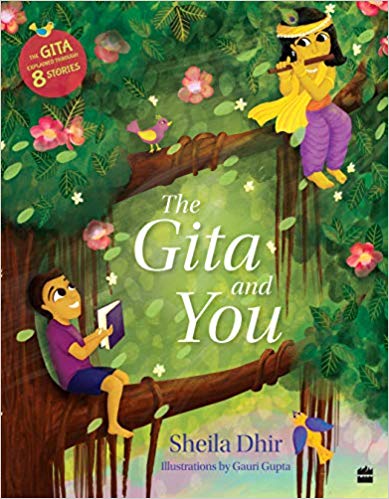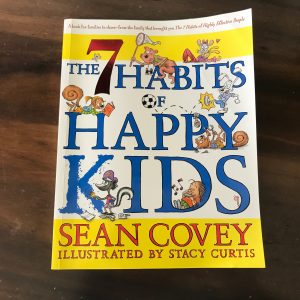In today’s fast paced world, a lot of information is available on the Bhagavad Gita but many-a-times comes across as being preachy. Sheila Dhir decided to recreate the teachings in an engaging and fascinating story format for children to understand the attitude of people in their everyday life. Her book, The Gita And You, published by HaperCollinsChildren’sBooks thus presents the Gita for children.
“They say that the Bhagavad Gita is a small book, only 700 two-line verses divided into 18 chapters. It is an epic poem that holds all the answers to questions that baffle us about life. A sacred Hindu scripture where conversations between Arjuna, the Pandava warrior prince and Lord Krishna (his charioteer) during the Kurukshetra War take place. Arjuna is confused and in a moral dilemma about fighting his cousins, the Kauravas. Lord Krishna delivers the ‘Gita Gyan’ and outlines the duties of a warrior or for that matter for any human in general, a representation of moral, ethical and spiritual struggles of human life”.
Beyond the Gita…
Sheila Dhir has explained in easy language and simple stories the true essence of the Bhagavad Gita, which is to live a life of discipline, honesty, kindness, integrity so that the young children can comprehend the meaning of the verses. The book is divided into 8 Kathas (stories) and engaging activities after each katha. These include crossword puzzles, word searches insightful questions, idiom fill ups and yoga postures. It imparts valuable lessons and the message of the Gita with illustrations by Gauri Gupta enhancing the reading experience manifold.

The short stories or kathas encompass varied themes. For example, The Lonely Uncle Next Door talks about an old man who is cranky and grumpy but due to a selfless action by a young boy, his attitude changes dramatically. In the Bhagavad Gita Krishna reveals that selfless action is the basis of all existence. Caring for someone’s happiness without expecting anything in return is called selfless love.
Another story, The Boy Who Had a Sweet Tooth is a familiar tale about Gandhiji, and recounts the fact whatever standard an ideal person sets, other people follow. All the stories thus illustrate a lesson from the Gita, but by using modern examples. To make it more interesting, the corresponding Sanskrit quote from the Gita precedes the story.
Other than the stories, Sheila Dhir provides interesting snippets of lesser known facts of the Bhagavad Gita and how to make a ‘Gita Calendar’ from the few shlokas given in the end. There are activities whereby the children can draw or make a poem or a story passage of their own and learn more about the teachings of the Gita. The cover page is attractive and beckons you to take a look in to the welcoming store house of Kathas inside. The Gita and You is a book to keep, filled with lots of valuable insights. It does view the Gita for children with a new lens!





